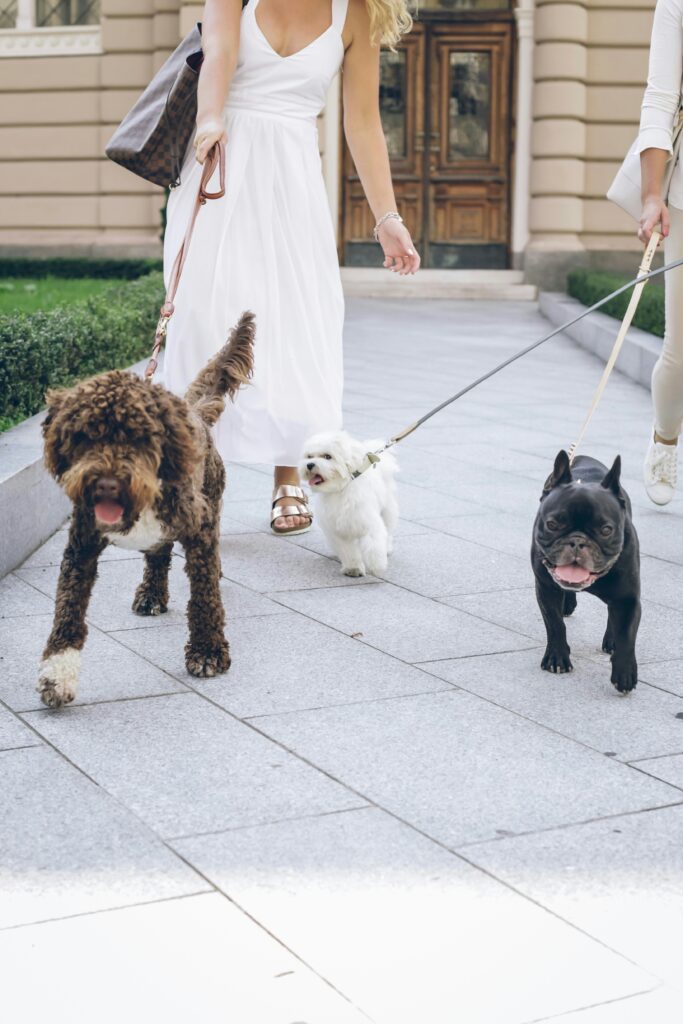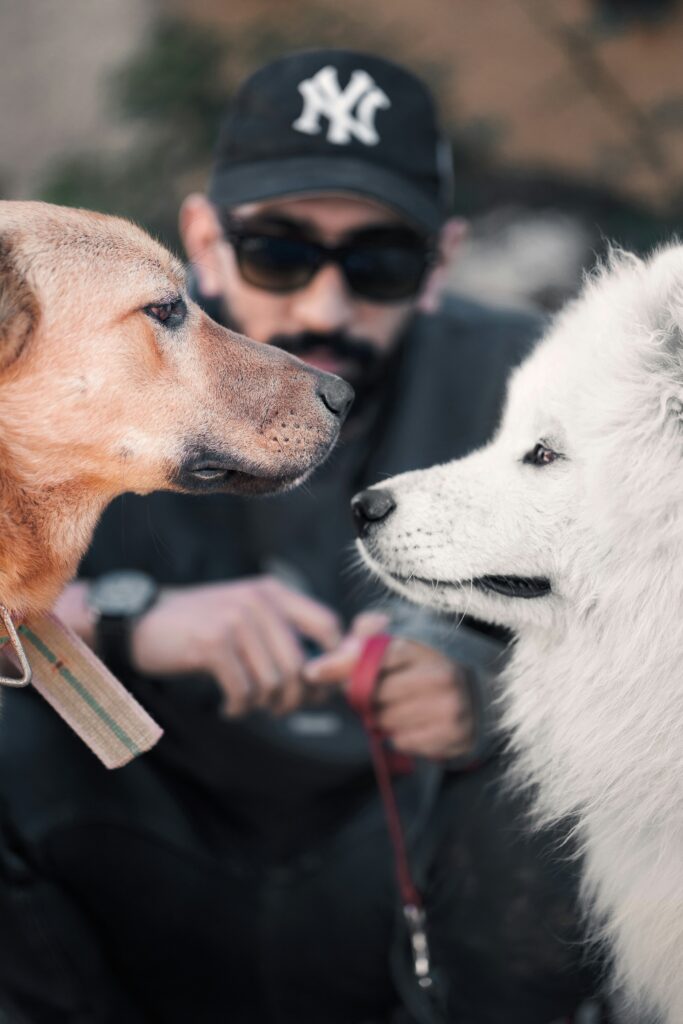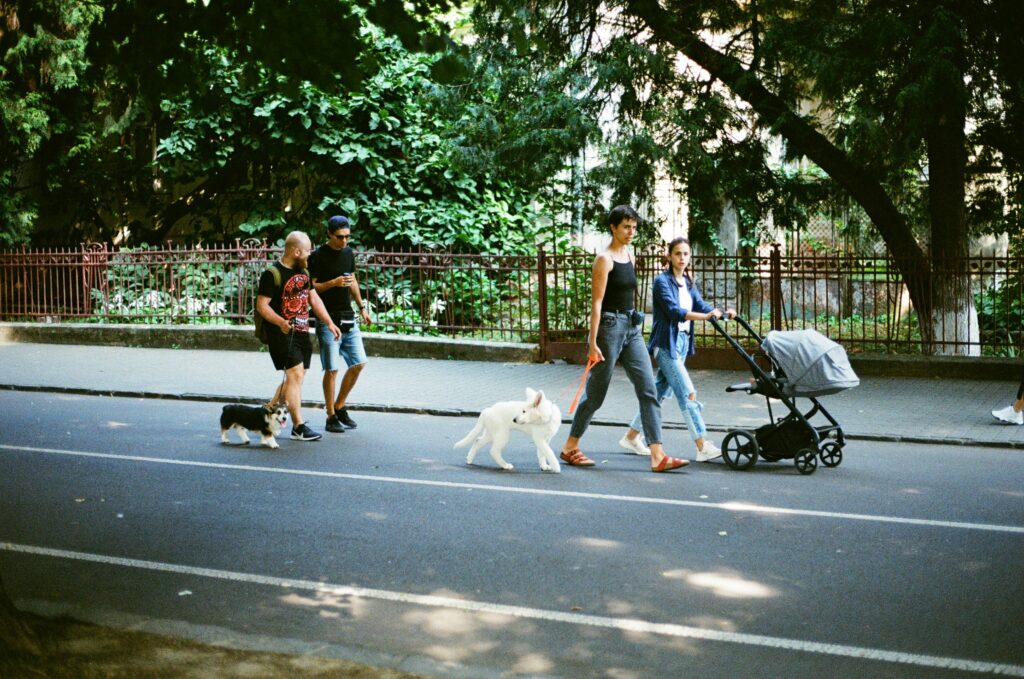Training Tips for a Well-Behaved Dog on a Pack Walk
A pack walk is a great way to provide exercise, socialization, and mental stimulation for your dog. However, to make the experience enjoyable and stress-free, it’s essential that your pup has good leash manners and understands basic commands. Whether you’re preparing for your first pack walk or looking to improve your dog’s behavior in a group setting, these training tips will help ensure a smooth and successful outing.
1. Teach Loose-Leash Walking
One of the biggest challenges on a pack walk is keeping your dog from pulling. A structured, calm walk begins with loose-leash training.
How to Train Loose-Leash Walking:
-
Start in a low-distraction environment before progressing to more challenging settings.
-
Use treats or a favorite toy to reward your dog for walking calmly at your side.
-
Stop when your dog pulls. Wait until they return to your side before moving forward again.
-
Practice changing directions frequently so your dog learns to pay attention to you.
Once your dog consistently walks without pulling, they’ll be better prepared for a group walk.
2. Practice Focus and Engagement
Dogs can easily get distracted on a pack walk. Training them to stay focused on you helps prevent pulling, lunging, or unwanted interactions.
Exercises to Improve Focus:
-
The “Look” Command: Teach your dog to make eye contact with you on cue. Say “look” and reward them when they hold eye contact.
-
Name Recognition: Call your dog’s name and reward them when they turn their head toward you.
-
Leave It Command: Essential for redirecting attention away from distractions, like other dogs, people, or scents.
3. Teach Essential Commands for Pack Walks
Having control over your dog in a group setting is crucial. Here are the must-know commands:
-
“Heel” – Teaches your dog to walk beside you without pulling.
-
“Leave it” – Prevents them from fixating on other dogs, food, or distractions.
-
“Sit” and “Stay” – Useful when stopping for breaks or keeping your dog calm in a crowd.
-
“Wait” – Helps your dog pause before moving forward, great for controlling entrances and exits.
Practice these commands in different environments so your dog is ready for real-world situations.
4. Set Expectations Before the Walk
Dogs feed off their owner’s energy, so starting a pack walk in a calm and controlled manner sets the tone.
Pre-Walk Routine for Success:
-
Allow your dog to sniff and relieve themselves before the walk.
-
Start with a short obedience session to reinforce focus.
-
Wait for your dog to be calm before putting on the leash and heading out.
If your dog begins the walk in an excited state, they’re more likely to be overstimulated throughout the walk.
5. Manage Excitement and Reactivity
Some dogs may get overexcited or reactive when walking in a group. To keep behavior in check:
-
Maintain distance from other dogs if your pup is easily overstimulated.
-
Reward calm behavior with praise and treats.
-
Use a structured walking position by keeping your dog at your side rather than allowing them to zigzag or lead.
If your dog struggles with reactivity, consider walking at the back of the pack and gradually working closer to the group as they improve.
6. Reinforce Good Behavior During the Walk
A well-behaved dog isn’t just trained at home—they need reinforcement in real-world scenarios.
-
Praise and reward calm walking to encourage good habits.
-
Be proactive, not reactive—redirect your dog before they get overly excited or anxious.
-
Use consistency in your commands so your dog knows what’s expected.
The more your dog practices good behavior, the more natural it will become during pack walks.
Conclusion
Training your dog for a pack walk ensures they remain calm, engaged, and well-mannered in a group setting. By focusing on leash skills, obedience commands, and structured walking, you can create a positive experience for both you and your dog. With patience and consistency, your pup will become a confident and well-behaved pack walker in no time!



